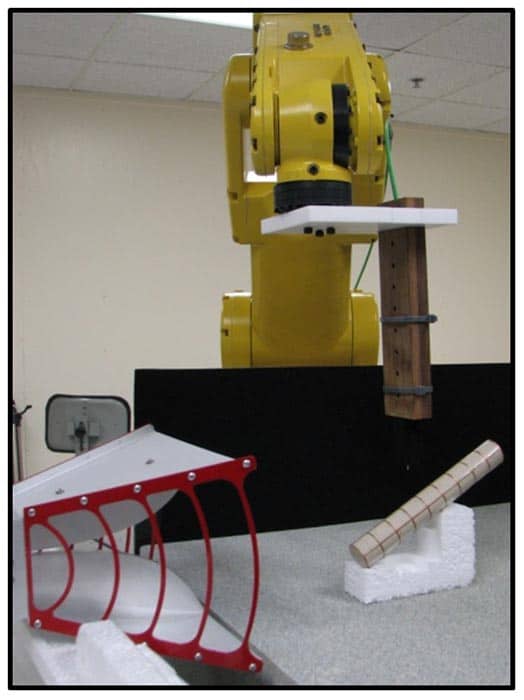
The first “mantle” invisibility cloak – in which a very thin “metascreen” cancels light scattering off an object, making it invisible – has been built by a team of researchers in the US. The cloak is just microns thick and can hide 3D objects from microwaves in their natural environment, in all directions and from all of the observers’ positions. The team claims that its device should be easier to produce than traditional cloaks that are based on the bulk properties of the metamaterial being used.
Traditional invisibility cloaks surround the object to be cloaked with a layer of bulk metamaterial, the refractive index of which is specifically tailored to guide electromagnetic waves around the outside of the cloaked object, thus making it appear to an observer that they are looking at empty space. While in theory these cloaks are amazing, they are problematic in practice. The permittivity and permeability of the metamaterials need to be highly anisotropic to allow the refractive index to vary in the required manner. To accommodate the anisotropy required, the cloak needs to be of comparable thickness to the object being cloaked. This restricts the movement of the object inside. The cloaks will often only work for a narrow range of wavelengths. Manufacturing tolerances are usually very low, so producing such cloaks is difficult. Alternative designs have been proposed to get round some of these problems, but these too have their own limitations.
Mantle cloaking
The mantle cloak, which was first proposed by electrical engineer Andrea Alù of the University of Texas at Austin in 2009, relies not on a bulk metamaterial but on an extremely thin “metascreen” that, when struck by incident electromagnetic radiation, produces an electromagnetic field in antiphase to the radiation scattered from the incident object, so making the object invisible – that is, the phase difference between the scattered fields from the cloak and the object being cloaked interfere and cancel each other out. The cloak, Alù claims, would be able to work over a broader range of wavelengths than many of the traditional cloaks using bulk metamaterials. In fact, the thinner the cloak could be made, the broader the bandwidth of radiation over which it would work.
The latest work from Alù and colleagues is an experimental realization of that original proposal. The researchers have used a 66 μm-thick flexible polycarbonate film covered with a fishnet design of 20 μm-thick copper strips to produce the required antiphase scattering to render an 18 cm cylindrical rod invisible to microwaves, provided the illuminated object is in a uniform electric and magnetic field. The cloak showed optimal functionality when the microwaves were at a frequency of 3.6 GHz and over a moderately broad bandwidth. Since the scattering of both the electric and magnetic fields is cancelled, there is no requirement for the object not to interact with one field or for the waves to be polarized in a particular direction. In principle, Alù suggests, the surface could be atomically thin.
Complex object
John Pendry of Imperial College London finds the research interesting. However, he cautions that the researchers have only cancelled the scattering of the electric and magnetic fields to the first order, and higher-order coefficients will become important in certain situations, such as when the light source is very close to the object and the illuminating wavefronts are radial rather than planar, or if the object is much larger than the wavelength of the incident light. Nevertheless, Pendry says that “Whereas a full cloak is a complex object, if you’re trying to cancel the scattering in just two dipole channels, it’s a much simpler design process, and this enables them to do the cloaking with a much thinner object than you could do otherwise.”
The researchers are now hoping to extend the cloak to try to find one that works at visible frequencies, and they also want to look at applications of the technology. “We have proposed using this technology for the next generation of optical nanodevices, for optical computing, switching, biomarkers and energy absorbers,” explains Alù. “For sensing, we suggest that we may be able to realize optimal sensors that receive signals without perturbing the measurements, by cancelling any interference between the sensor and the set-up that is being sensed.”
The research is published in New Journal of Physics.



